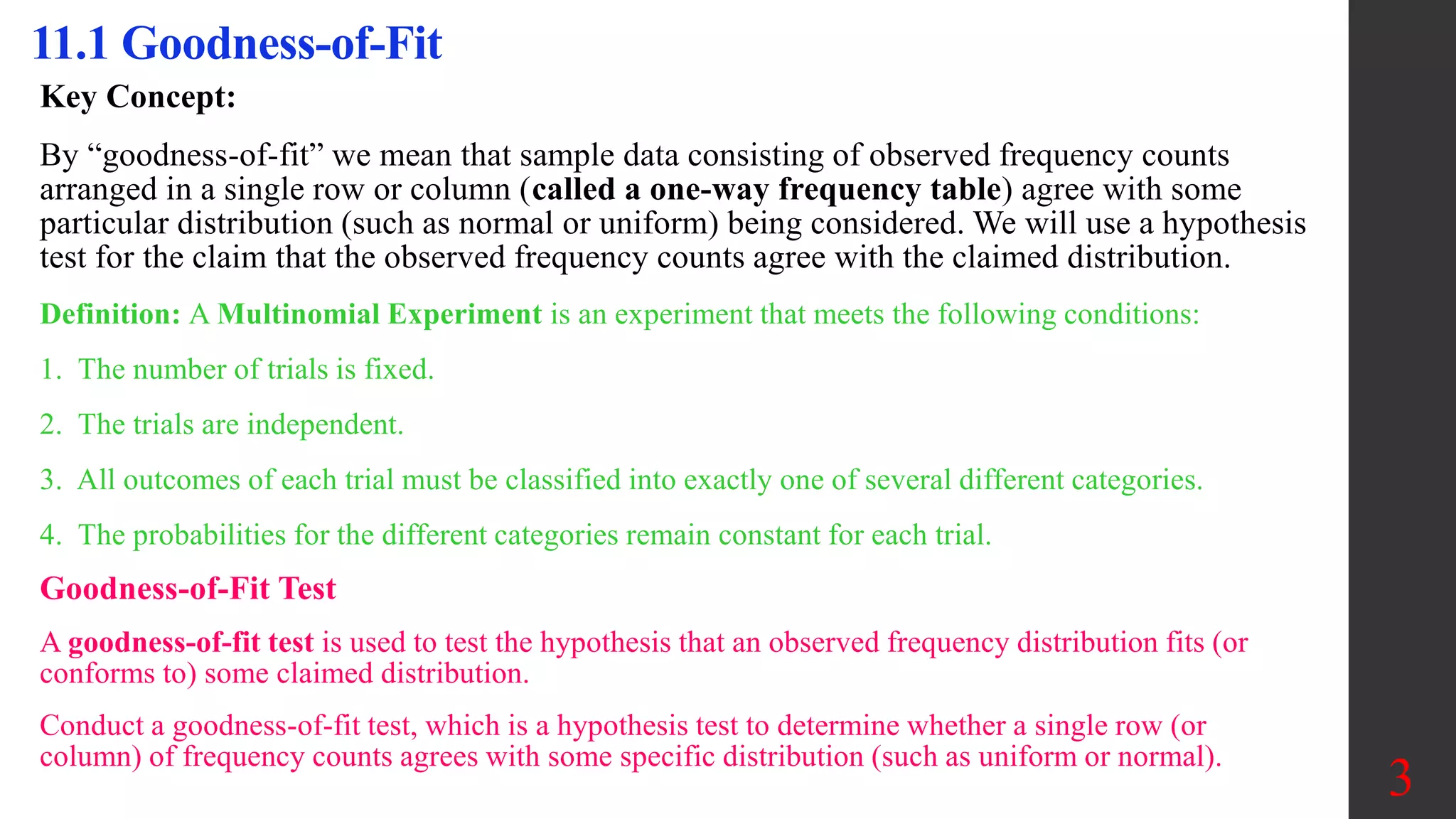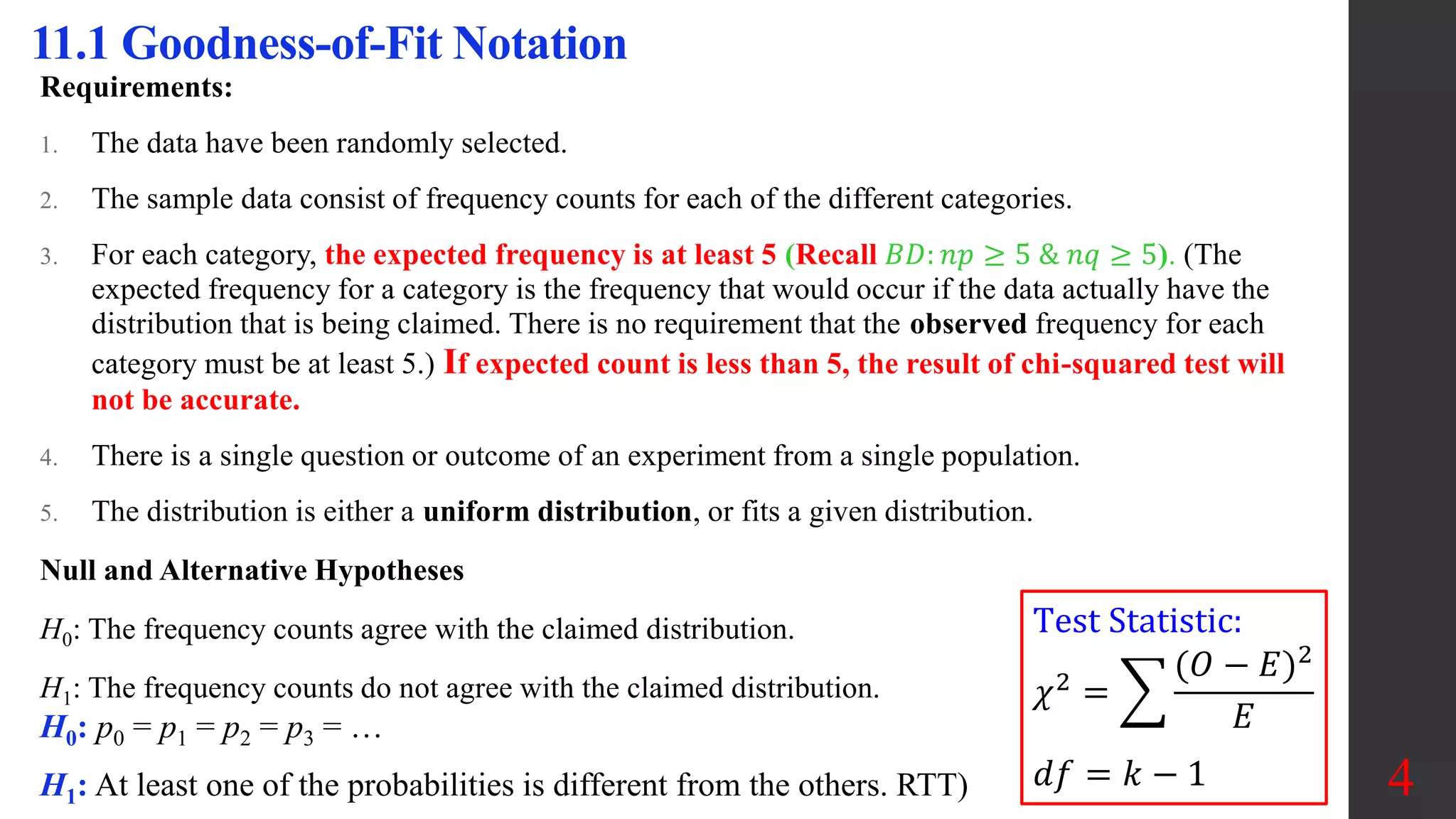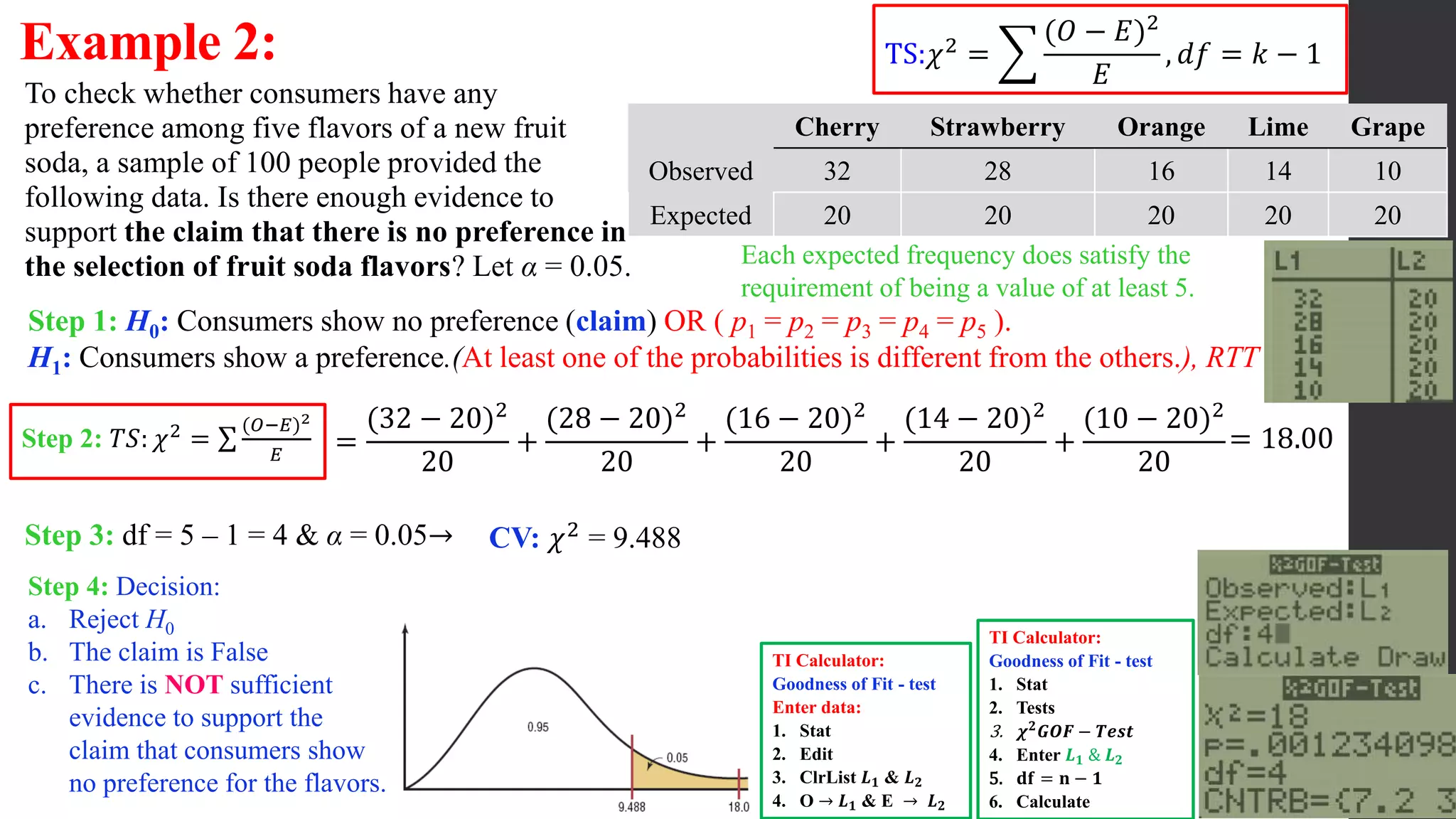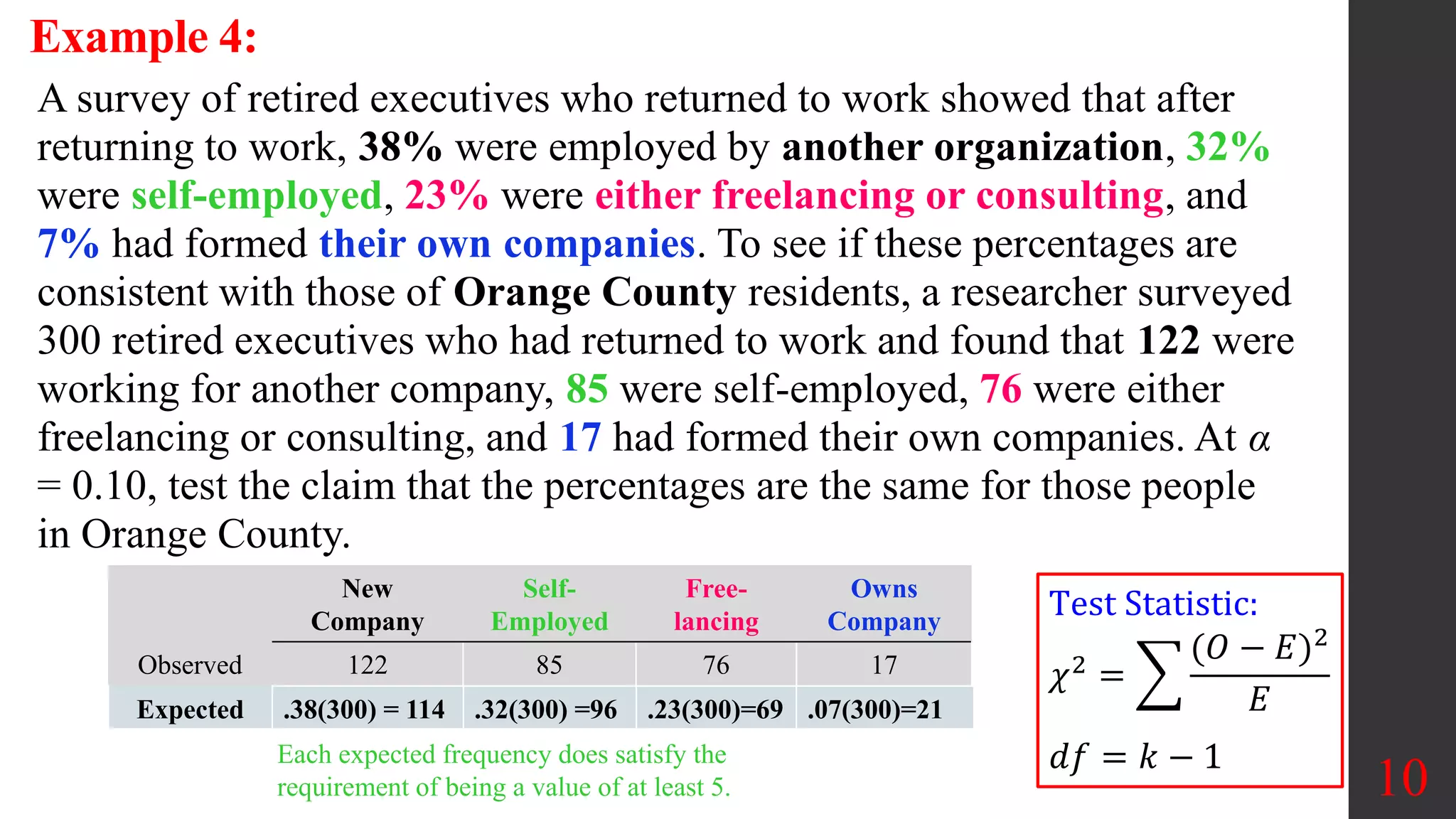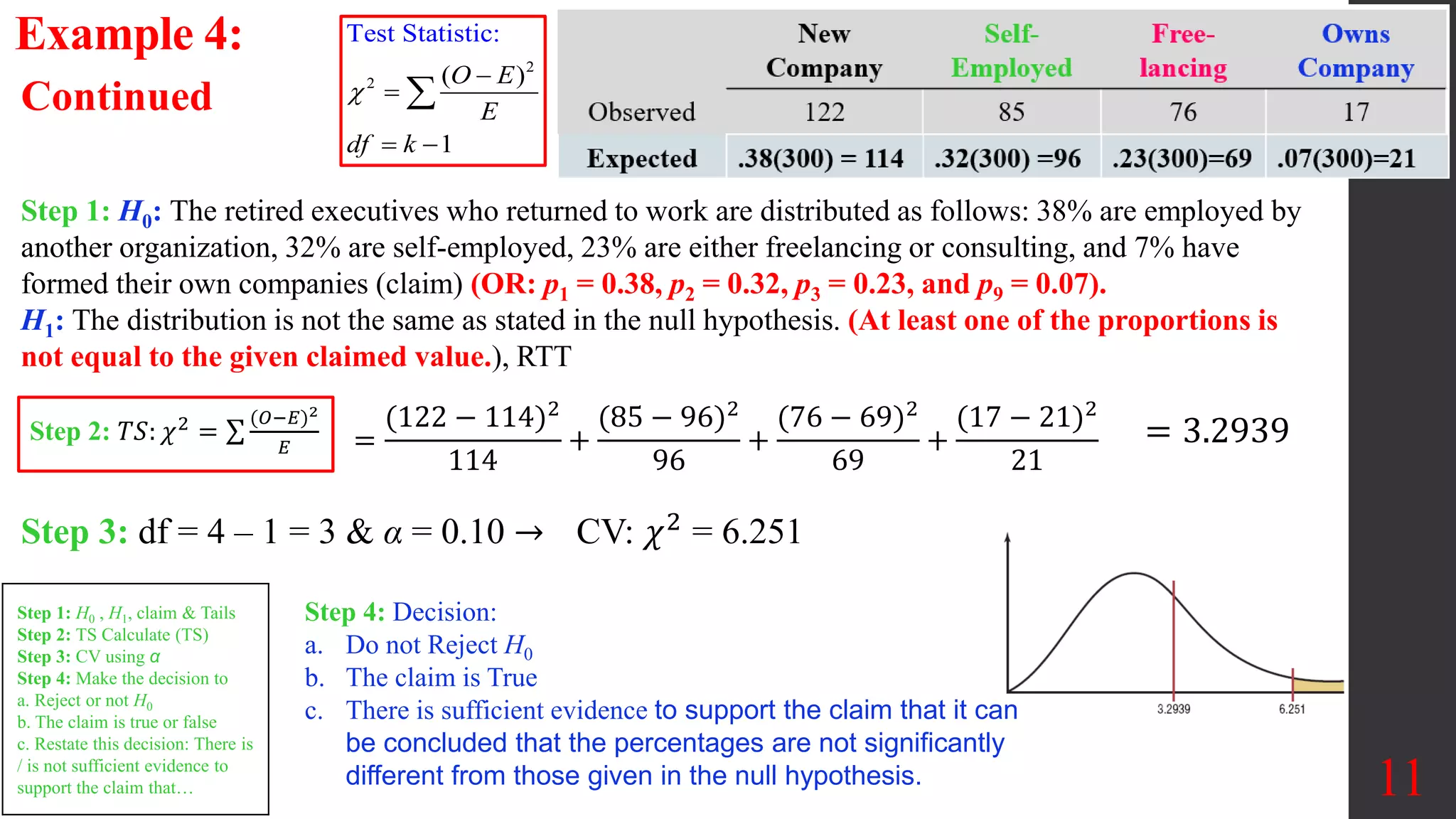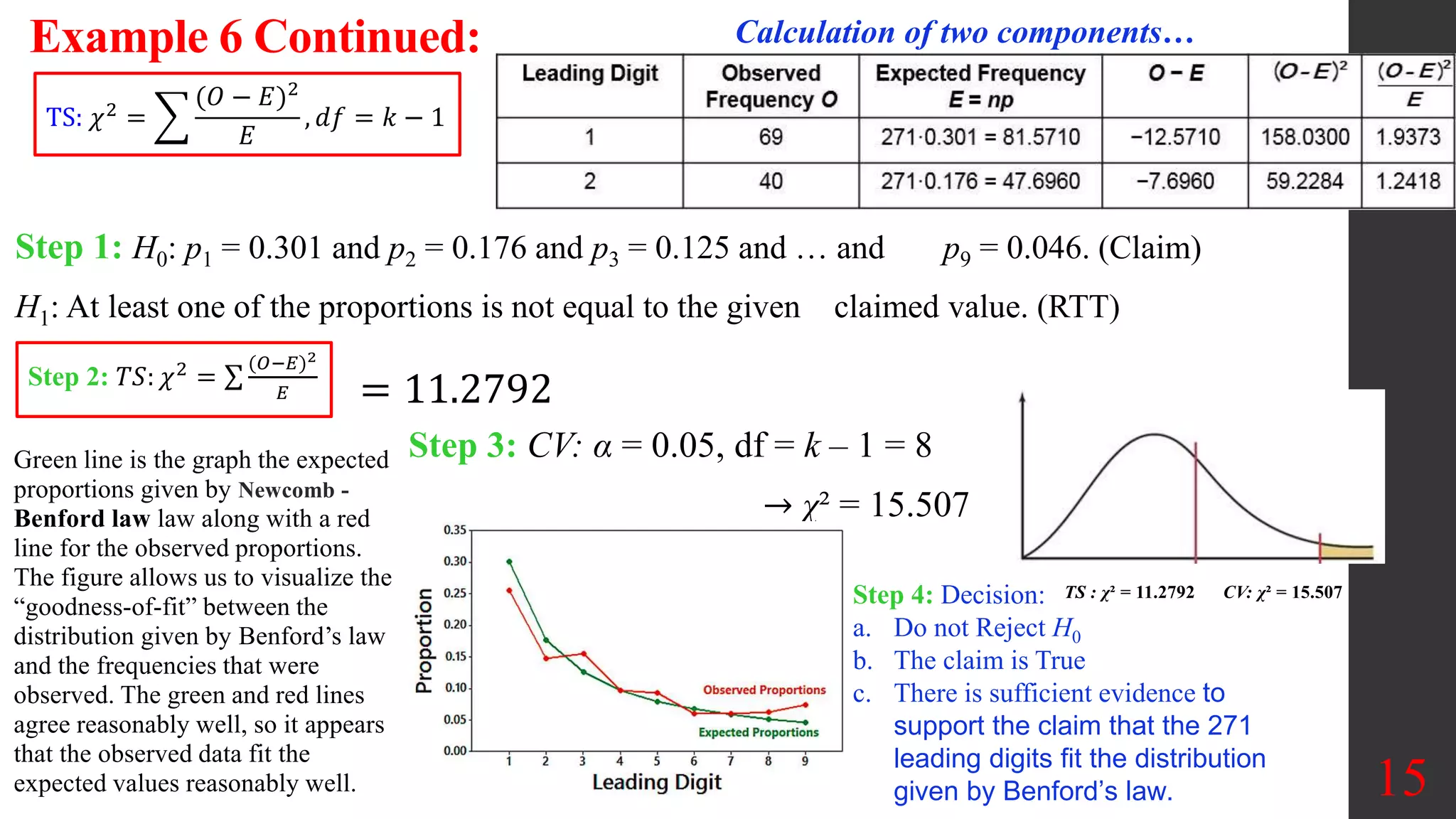The document provides information about goodness-of-fit tests and contingency tables. It defines a goodness-of-fit test as testing whether an observed frequency distribution fits a claimed distribution. It also provides the notation, requirements, and steps to conduct a goodness-of-fit test including: defining the null and alternative hypotheses, calculating the test statistic as a chi-square value, finding the critical value, and making a decision to reject or fail to reject the null hypothesis. Several examples demonstrate how to perform goodness-of-fit tests to determine if sample data fits a claimed distribution.


